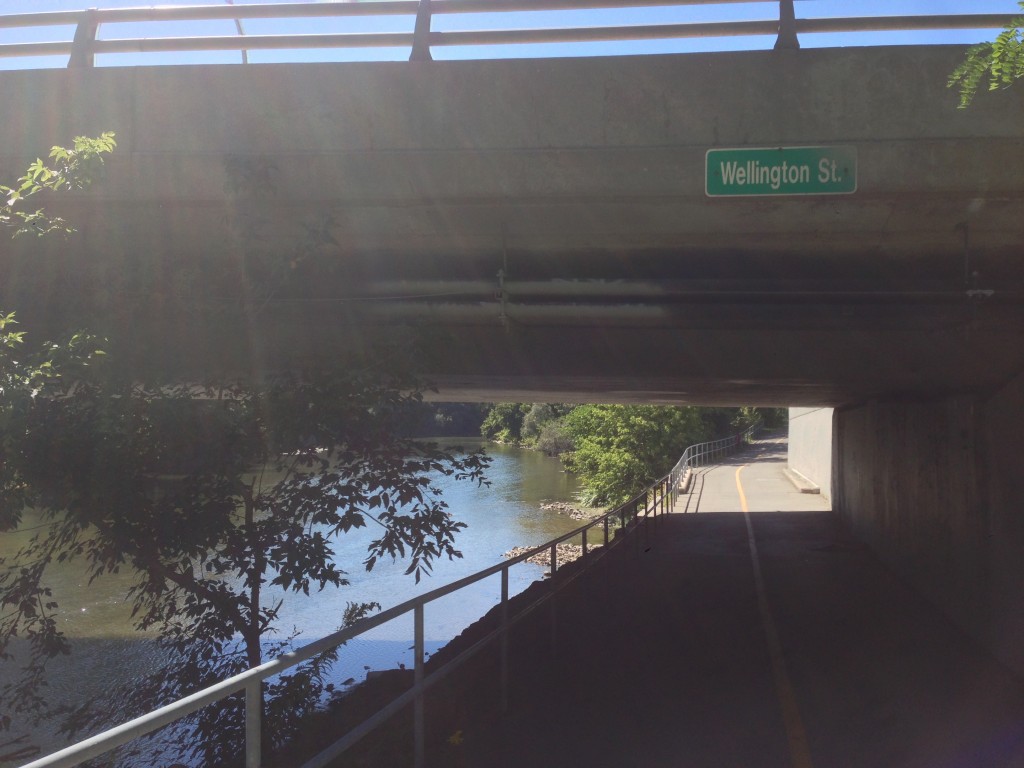What’s in a name? Building alongsides…
During the time the Idle No More uprising round dances, blockades and other actions were taking place across North America, our art making collective was in a creative process within the SoHo neighborhood, in London Ontario. The river that runs through this particular neighborhood was one of the thousands of waterways delisted from protection under Canadian law, due to the Conservative government’s overhaul of the Navigable Waters Protection Act of 1882 (NWPA). This overhaul was one of the legislative attacks on indigenous sovereignty that Idle No More was (NWPA) resisting. The original NWPA had mandated an extensive approval and consultation process before construction of any kind could take place in or around any waterway that could in principle be navigated by a floating canoe. The new bill alters the Act from originally protecting 2.5 million rivers and lakes across the country to now only protecting 97 lakes and 62 rivers. (CBC website 2013).
As part of our process we researched the history of the naming of the river that runs along the western edge of SoHo. We found that there were multiple iterations of the naming of the river. It is called Askunessippi by the Attawandaron, D’shkan or Eshkin Ziiibi by the Ojibwa, la Tranche by the French and re-named the Thames River (no doubt after the British capital) in 1793 by the British settler colonials who founded London, Ontario.
I am a mix of western European immigrants who moved to London in the late 18th century. Ruth, a choreographer and dancer in the collective was born in London. Her mother immigrated to Canada to the United Kingdom in her twenties and was our first dance and improvisation teacher. Billy, a visual artist, was born on the Onyota’a:kA (Oneida) reserve near London and adopted by Ruth’s family.
Before European contact the Oneida territory included most of New York State. In 1838, the Treaty of Buffalo Creek directed the removal of all Iroquois from New York State. The Oneidas sold their New York land in 1839 and jointly purchased 5,200 acres near London, Ontario. Our art making collective’s coming together is fraught with contradictions. Preceded and inevitably coloured by colonial settler displacement and killing practices, our art making collaboration, shapes, challenges and continuously makes me different.
It is the Oneida naming of river that runs through our neighborhood that helped me think through the art making practices we as a collective try to engage in. The Oneida did not rename the river when they settled by it in Ontario in the 1800’s. They simply refer to the Kuayuhatati or along the river. This practice of not renaming, and creating alongside other names and stories, inspires my own critical art making practices. The etymological strand in the OED, relates alongside to being close by the side of a person or thing; side by side with something; parallel to something. Alongside also can mean together with; at the same time as; in coexistence with. Lynette Hunter uses another word, “outwith” as a way of describes along sides that are “not imaginable, not sayable, not recognizable within the boundaries defining the place where you are” (Hunter 2014). Alongside work recognizes hegemonic discourse, inflected by the hegemonic system in which it is situated, yet knows its own practices has value and agency (Hunter 2014). In working alongside hegemonic structure we work from a need to embody other kinds of ways being in relation to the land we live on, outside of those ways the nation state conceives of. In attempting to imagine and feel other ways of being in relation to the land we strive to make present other possibilities of being in a human body and the potential ways of coming into relationships to the particular place that these ways might offer. We are interested in ways of being in relation that work against the extractivist, totalitarian (Kulshyski 2013) mindset promoted by the nation state. These ways have the potential to resist the dominant culture, where dominance refers to that which is complicit with or more actively carries on the work of totalization, a making of the same (Kulchyski 2006) and one which the Idle No More movement rises up against.
